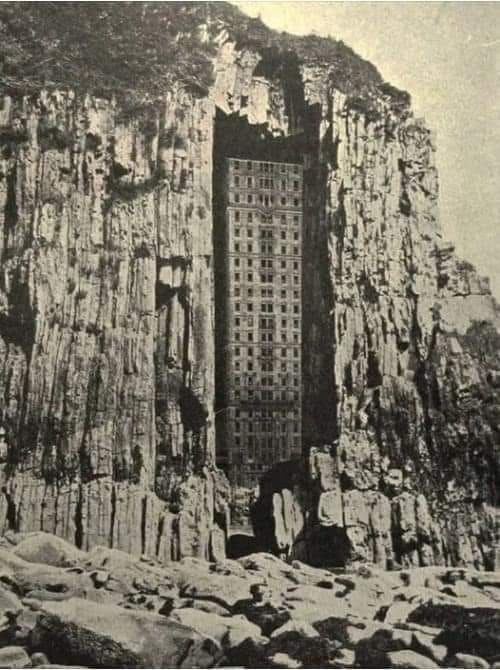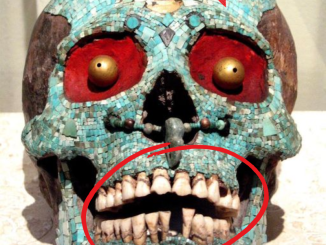The enigma of Tartaria, also known as Great Tartary, has intrigued historians, researchers, and conspiracy theorists alike. Once considered the “greatest country in the world,” Tartaria is believed to have been a powerful and extensive empire that occupied much of northern Asia until approximately 1775. Stretching from the Caspian Sea and the Ural Mountains to the Pacific Ocean, this civilization is said to have vanished following a series of catastrophic events and deliberate suppression by a world elite. This blog post delves into the hidden history of Tartaria, exploring its mysterious disintegration, the enigmatic mud flood, and the potential suppression of its advanced technologies. By examining this alternative narrative, we seek to uncover the lost legacy of Tartaria and the implications it has on our understanding of history.

The Rise and Fall of Tartaria
Tartaria’s prominence in historical maps and documents prior to the 19th century paints a picture of a vast and influential empire. Covering all of Siberia and extending into parts of Europe and Asia, Tartaria was a formidable presence. Historical records describe Tartaria as a nation with a rich imperial character, exerting significant influence over its neighboring regions. Its depiction on various maps from the 16th to the 18th centuries attests to its acknowledged existence during that period.
However, the fall of Tartaria is shrouded in mystery and controversy. According to alternative historians, the disintegration of this grand empire was precipitated by a series of catastrophic events, most notably the infamous and mysterious mud flood. This event, which supposedly buried entire cities and infrastructure under layers of mud, effectively erased evidence of Tartaria’s advanced civilization. Proponents of this theory argue that the world elite, or a coalition of rival empires, orchestrated this catastrophe to facilitate the rise of the New World Order by obliterating the Old World Order represented by Tartaria.
Historical records and artifacts supporting Tartaria’s existence began to disappear or be reinterpreted in the late 18th and early 19th centuries. This suppression, combined with the physical destruction caused by the mud flood, contributed to the gradual erasure of Tartaria from mainstream historical narratives. The question remains: why was Tartaria targeted, and what secrets did it hold that warranted such drastic measures?
The Mysterious Mud Flood and Its Implications
Central to the alternative history of Tartaria is the concept of the mud flood—a catastrophic event that allegedly submerged entire cities and technological marvels under layers of sediment. Proponents of this theory point to photographs and architectural anomalies that suggest buildings and structures were buried or partially buried by sudden mud flows. These images, they argue, reveal an advanced civilization abruptly brought to ruin.
The mud flood theory posits that this event was not a natural disaster but a deliberate act of destruction orchestrated by the world elite. The goal was to erase Tartaria’s technological advancements and sophisticated infrastructure, thereby resetting human memory and paving the way for a new world order. This idea is supported by accounts of unusual architectural features, such as windows and doors below ground level, which some interpret as evidence of buildings originally constructed on the surface and later buried by mud.
Critics of the mud flood theory argue that such features can be explained by conventional geological processes, subsidence, or changes in building practices over time. Nonetheless, the persistence of the mud flood narrative highlights a broader skepticism about mainstream historical accounts and a desire to uncover hidden truths about humanity’s past.
Suppression of Tartarian Technology and Knowledge
One of the most compelling aspects of the Tartaria narrative is the claim that this ancient civilization possessed advanced, clean, and free technology. According to proponents of this theory, Tartaria’s technological prowess included sophisticated architecture, energy production, and possibly even forms of transportation far ahead of their time. Mysterious photographs and documents purportedly showing advanced machinery and infrastructure are often cited as evidence of Tartaria’s technological capabilities.
This narrative suggests that the destruction of Tartaria was driven by a desire to monopolize and control its scientific and technological knowledge. The world elite, it is argued, sought to suppress Tartaria’s advancements to maintain their own power and control over emerging industrial and technological developments. By erasing Tartaria’s contributions from the historical record, these elites could claim credit for technological progress and ensure their dominance in the new world order.
Supporters of this theory point to anomalies in historical records and artifacts, suggesting that significant discoveries and innovations were either hidden or attributed to other civilizations. The suppression of Tartaria’s technology, they argue, represents a deliberate attempt to rewrite history and obscure the true origins of human progress.
Tartaria in the Context of Ancient Discoveries
The story of Tartaria, whether viewed as historical fact or speculative fiction, invites a broader reflection on the nature of ancient civilizations and the potential gaps in our understanding of human history. Throughout the world, countless discoveries challenge conventional narratives and hint at lost or forgotten chapters of our past.
Consider the ancient city of Göbekli Tepe in Turkey, which predates Stonehenge by several millennia and suggests advanced organizational and architectural skills among prehistoric peoples. Similarly, the Antikythera mechanism, an ancient Greek device often described as the world’s first analog computer, reveals technological sophistication far beyond what was previously believed possible for its time.
These and other discoveries underscore the complexity of human history and the possibility that many advanced civilizations may have existed and vanished without leaving clear records. The story of Tartaria fits within this broader context, encouraging us to remain open to alternative interpretations of history and to question the completeness of the narratives we have inherited.
Conclusion
The hidden history of Tartaria and the alleged reset of human memory through the mud flood and suppression of advanced technology presents a fascinating and provocative alternative narrative. While mainstream historians may dismiss these theories as speculative or unfounded, they nonetheless highlight important questions about the nature of historical knowledge and the potential for undiscovered or forgotten chapters in our collective past.
As we continue to explore and investigate the remnants of ancient civilizations, it is crucial to approach history with a sense of curiosity and skepticism, recognizing that the full story of humanity’s past may be far more complex and intriguing than we currently understand. The case of Tartaria serves as a reminder that history is not just a collection of facts but a dynamic and ever-evolving tapestry of human experience.
For those interested in the visual and material evidence of Tartaria’s existence and alleged suppression, we invite you to view the images and artifacts that have fueled this alternative history. By examining these pieces of evidence and engaging with diverse perspectives, we can deepen our appreciation for the rich and multifaceted history of human civilization.
4o


